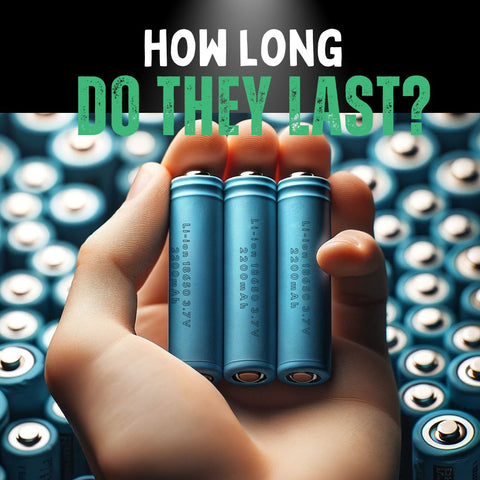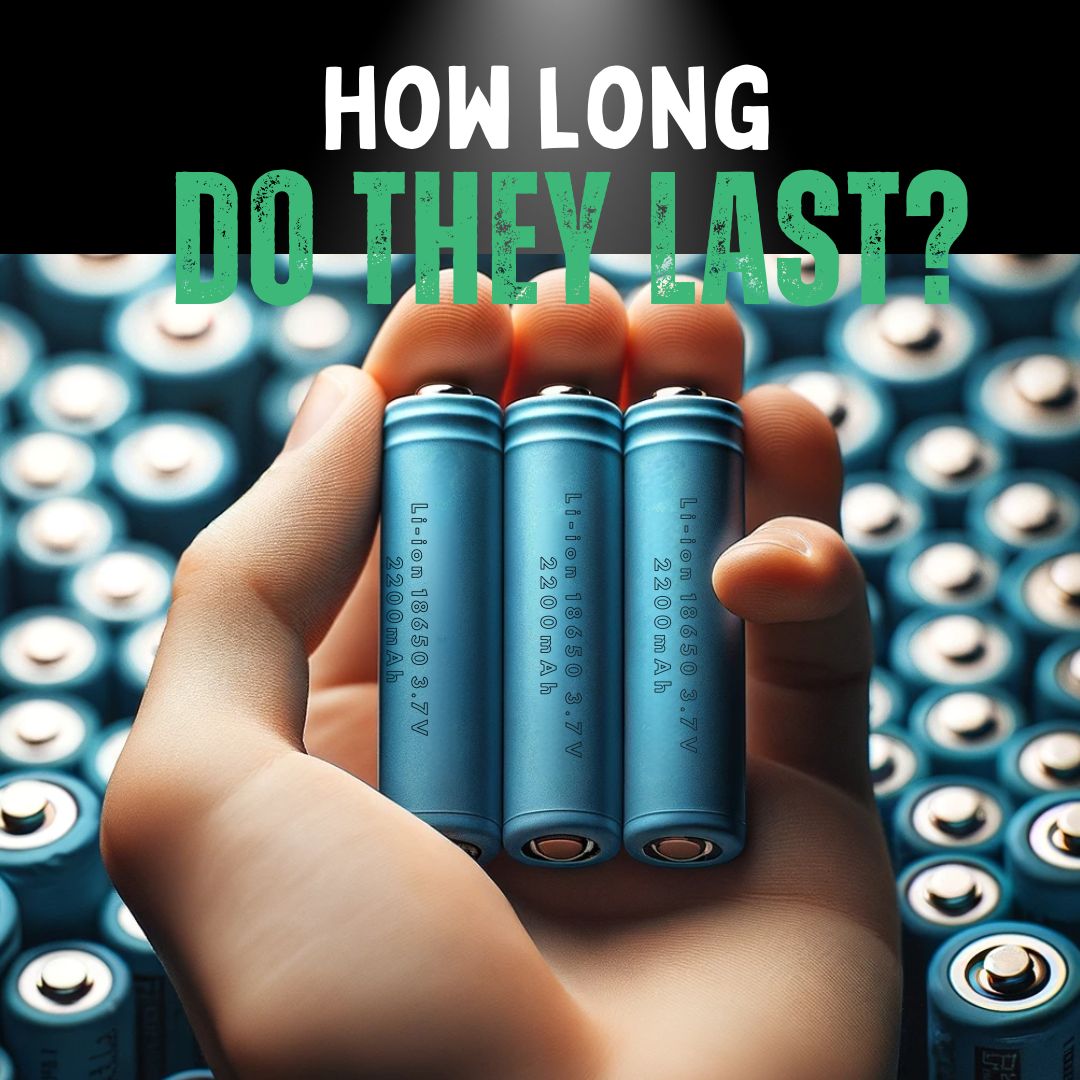
In the realm of modern technology, lithium-ion batteries are the unsung heroes powering our day-to-day lives.
From the smartphone in your pocket to the electric vehicle in your driveway, these batteries are pivotal.
But how long can we rely on them before they need replacing?
This article dives into the lifespan of lithium-ion batteries, unraveling the factors that impact their longevity and offering insights into maximising their life.
The Lifespan of Lithium-Ion Batteries
What is the Typical Lifespan of a Lithium-Ion Battery?
The lifespan of lithium-ion batteries is a key concern for users.
According to Battery University, a typical lithium battery should last between a specific number of charging cycles.
Most manufacturers expect their lithium-ion batteries to endure around the same number of cycles, averaging about three to five years.
Proper battery maintenance can extend this battery life.
Lithium battery life can be significantly enhanced by following the manufacturer's guidelines for charging the battery.
Factors influencing battery lifespan
Charging patterns and cycle definition play a crucial role in the longevity of lithium-ion batteries. Avoiding the memory myth, which is more relevant to NiCad batteries, is essential as it does not apply to lithium-ion technology.
Proper battery maintenance, including heat management, is critical. Charging cycles and maintaining battery capacity are vital for longevity. Storage conditions, such as keeping the battery in a cool and dry place, also affect its lifespan.
Moreover, gas generation within a battery, often a result of improper charging or high temperatures, can significantly reduce its efficiency and safety.
Managing this aspect through careful use and storage can greatly enhance the lifespan of lithium-ion batteries.
Application-specific battery life
It's fascinating how the lifespan of lithium-ion batteries varies with their application.
In cars, these batteries can last between 8 to 10 years, depending on how you use and maintain them.
Similarly, in golf carts, well-maintained lithium batteries can last for more than 10 years, with some even boasting a life cycle of up to 4000-15000 cycles.
In the context of electric vehicles, the long-term implications of battery use are a critical factor.
These vehicles rely heavily on the efficiency and durability of their lithium-ion batteries, underlining the importance of advancements in technology to meet the demands of sustainable transportation.
Maximising the Lifespan of Your Lithium-Ion Battery
To maximise your lithium battery life, understanding the charging patterns and maintaining a consistent charging cycle is key.
Contrary to the memory myth associated with older battery technologies like NiCad batteries, lithium-ion batteries benefit from regular, partial charges.
Using the correct charger and avoiding extreme temperatures can prevent voltage drops and gas build-up, which are detrimental to battery health.
It's also worth noting that the shelf life of a lithium-ion battery, even when not in use, is an important consideration.
Proper storage conditions can help maintain the battery's integrity over time, preventing premature degradation.
Understanding Battery Health Indicators
When it comes to maintaining and maximising the lifespan of lithium-ion batteries, one crucial aspect is understanding battery health indicators.
These indicators, often available on your devices, give a snapshot of the battery's current state and health.
Why battery health indicators matter:
- Real-time monitoring: They provide real-time data on the battery's capacity and performance.
- Early warning signs: Declining health metrics can alert you to potential issues before they become serious problems.
How to interpret these indicators:
- Capacity measurement: Indicates how much charge the battery can hold compared to when it was new.
- Cycle count: Shows how many charge cycles the battery has undergone.
- Voltage and temperature readings: High or low readings can indicate stress or potential damage to the battery.
By regularly checking these indicators, users can make informed decisions about their charging habits and usage patterns, ultimately helping to prolong the life of their batteries.
The Role of Battery Management Systems
Battery Management Systems (BMS) are crucial for maintaining battery capacity and ensuring optimal charging cycles.
A BMS helps in evenly distributing charge and managing the heat within the battery, which is critical for long-term implications on battery health.
Functionality of a BMS:
- Balancing charge: It evenly distributes charge among cells, preventing overcharging and deep discharging.
- Monitoring temperature: Maintains optimal operating temperatures.
- Managing discharge rates: Prevents damage from high discharge rates, which can shorten battery life.
Benefits for users:
- Prolonged battery life: By managing the battery’s operational conditions, a BMS significantly extends its lifespan.
- Safety measures: A BMS also plays a pivotal role in preventing battery-related accidents by monitoring critical parameters.
Incorporating knowledge about BMS and battery health indicators into your usage habits can lead to more effective and longer-lasting use of lithium-ion batteries.
The Evolution of Lithium-Ion Batteries
Understanding the evolution of lithium-ion batteries is key to appreciating their current capabilities and lifespan.
Over the years, technological advancements have significantly improved these batteries, making them more efficient, durable, and environmentally friendly.
Key milestones in their development:
- Energy density improvements: Early lithium-ion batteries had lower energy densities. Today's batteries store more energy in the same physical space, enabling longer use between charges.
- Durability enhancements: Advances in materials and design have led to batteries that withstand more charge/discharge cycles without significant degradation.
- Safety features: Innovations have enhanced safety, reducing risks of overheating and other issues.
Impact on lifespan:
- Longer usage periods: Modern lithium-ion batteries can last significantly longer than their earlier counterparts, both in terms of years and charge cycles.
- Improved maintenance practices: Understanding of optimal charging and storage practices has evolved, further extending battery life.
This historical perspective allows users to better understand the capabilities and limitations of their lithium-ion batteries, leading to more informed usage and maintenance decisions.
Recycling and End-of-Life Management
When it comes to replacement and recycling of lithium-ion batteries, understanding their shelf life and the process of recycling is crucial.
The stamped date on batteries can often give users an idea of their manufacturing date, which helps in assessing their shelf life.
Importance of recycling:
- Environmental protection: Proper recycling prevents hazardous materials in batteries from harming the environment.
- Resource recovery: Recycling recovers valuable materials like lithium, cobalt, and nickel, which can be reused in new batteries.
Steps for Responsible Disposal:
- Identify local recycling programs: Many regions have specific programs or facilities for battery recycling.
- Follow manufacturer’s guidelines: Some manufacturers provide guidelines or programs for recycling their products.
Challenges in Recycling:
- Complexity: The complexity of lithium-ion batteries makes them more challenging to recycle compared to other types.
- Evolving technologies: As battery technology evolves, so must recycling processes to accommodate different types and components.
By understanding the importance of recycling and end-of-life management, users can take responsible steps to ensure their batteries are disposed of in an environmentally friendly manner.
In Summary
To wrap it up, lithium-ion batteries are a cornerstone of modern technology, and understanding their lifespan is key to getting the most out of them.
With proper care and usage, these batteries can serve you well beyond their expected lifespan.
Remember, it's not just about using technology; it's about using it wisely.
FAQ's:
How can I tell when my lithium-ion battery needs replacing?
Signs that a lithium-ion battery needs replacing include a noticeable decrease in the device's runtime, the battery taking longer to charge, or not holding a charge effectively. If your device shuts down unexpectedly or the battery becomes unusually hot during use or charging, these are also indicators that the battery may need to be replaced.
What are the best practices to extend the lifespan of a lithium-ion battery?
To extend the lifespan of a lithium-ion battery, it's advisable to minimise the time it spends fully charged or completely discharged, as both extreme states can stress the battery. Aiming for a partial charge, ideally up to about 80% state of charge (SoC), rather than charging to 100%, can be beneficial. If reaching 100% charge is unavoidable, unplugging the device promptly is recommended to reduce stress on the battery.
Is it true that lithium-ion batteries can last up to 10 years under certain conditions?
Lithium-ion batteries can have a lengthy lifespan, but reaching a full 10 years is relatively uncommon and often exaggerated. Over time, a lithium battery's capacity will gradually decrease, leading to diminished performance. Typically, for most consumer applications, a lifespan of 2-5 years is more realistic, depending on usage and maintenance.
What factors most significantly shorten the life of lithium-ion batteries?
Factors that significantly shorten the life of lithium-ion batteries include exposing them to high temperatures, overcharging, allowing them to discharge completely before recharging, and high drain usage. Inappropriate storage, such as storing at full or zero charge for extended periods, can also reduce a battery's lifespan.
Get in Touch 🚀
Loved our article on “How Long Do Lithium-ion Batteries Last??” Got the itch to dive into more wheely-awesome info?
Whether you're a parent or a grandparent, we're here for all your kids ride-on toy questions! 🚗💨
Feeling click-happy?
Jump straight into our wonderland at RiiRoo.com.
Or, if you're more the chatty type, give our Live Chat a whirl and let's talk toys!





Share:
BMW i8 vs BMW i4 vs BMW 6 GT M Sport: Kids Electric Ride on Car Comparision